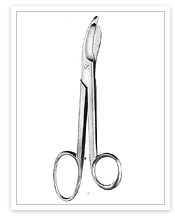|
A retractor is a surgical instrument that is used to hold back underlying organs and tissues, so that body parts under the incision may be accessed. It is also used to separate the edges of a surgical incision or wound. Surgical retractors are available in many sizes, shapes, and styles. Surgical retractors are used in different surgical procedures. Retractors are used during operations to help doctors by moving tissue and organs away from the area upon which the surgery is to be performed. There are many new surgical devices like electric scalpels and laser scalpels coming up in the market as a result of which it has become very essential to modify the design and construction of surgical retractors.
Importance of surgical retractors
Surgical retractors are very important because they determine the exposure of the operative field. A surgeon needs an exposure best as possible while inflicting a minimum of trauma to the surrounding tissue. The handles of the retractor may be hook shaped, notched, or ring shaped to give the holder a firm grip without tiring. The blades of the retractors are at a right angle to the shaft. The blades can be smooth, raked, or hooked.
Materials
A common material used in the making of retractors is stainless steel. Stainless steel is preferred because of its strength and its ability to be sterilized. The retractors are therefore extremely hard. However, there are some drawbacks of stainless steel retractors like they become very slippery when they come into contact with blood and other body fluids which can lead to tissue damage during operation. Moreover, stainless steel is also thermally highly conductive which also results in tissue injury as it quickly absorbs heat from the tissue with which it comes in contact. Another disadvantage is that they have reflective surfaces which produce glare under the high level illumination which is very common during surgical procedures.
To overcome these drawbacks, polymeric materials are used in the making of surgical retractors. Such polymeric materials include
- Polyetherimide
- Polyimide and
- Thermosetting materials
|
It is to be noted that any material of construction of surgical retractors is that
- It must be sterilizable
- It must be autoclavable
|
to allow for the necessary sterilization process so they may be reused for multiple, successive surgical procedures.
Types of retractors
Self retaining retractors
Self retaining retractors do not need an assistant to hold them in place. self retaining retractors hold tissue apart and lock it in place. Rib Spreaders come in this category. They hold the ribs apart during the abdominal surgery when the required organ is located inside the rib cage.
Hand held Retractors
can be hand held retractors. The hand held retractors require an assistant to hold them but the self retaining ones don't once they are adjusted in position. The correct method of using a hand-held retractor is that it must be held by its handle properly so as to produce maximum exposure of the surgical area, maximum leverage, and steady retraction.
Varieties of retractors
Each type of surgical retractors have specific properties as per the usage. For instance:
- Tissue Retractor: During a surgery, the tissue retractors hold tissue flaps away from the treatment site. This provide better visibility, reach and undisturbed working. Some retractors may have fork like prongs. This allows the handling of the tissue without causing much damage.
- Cheek Retractor: These retractors are designed to hold and retract the cheeks, tongue, or a portion of the mucosa during surgical procedures. The retractors are made of metal or plastic, and may be large, curved, or angled.
- Senn retractor is simple.
- The deaver is more exotic.
- The hohmann is orthopedic retractor.
- Army-navy is a bladed retractor.
- Rake retractors are forked.
- Common self retaining retractors are weitlaner and gelpi. Also use adsons and balfours.
|
Names of different retractors
Depending on the various body parts which need to be operated, there are different names given to retractors such as follows:
- Lung Retractor
- Abdominal Retractor
- Skin Retractor
- Eyelid Retractor
- Canny Ryall Retractor
- Scalp Retractor
- Pin Retractor
- Vertical Retractor
- Cone Retractor
- Arterial Retractor
- Fan Blade Retractor
- Vaginal Retractor
- Laminectomy Retractor
- Thyroid Retractor
- Nerve Root Retractor etc.
|
|
 |




